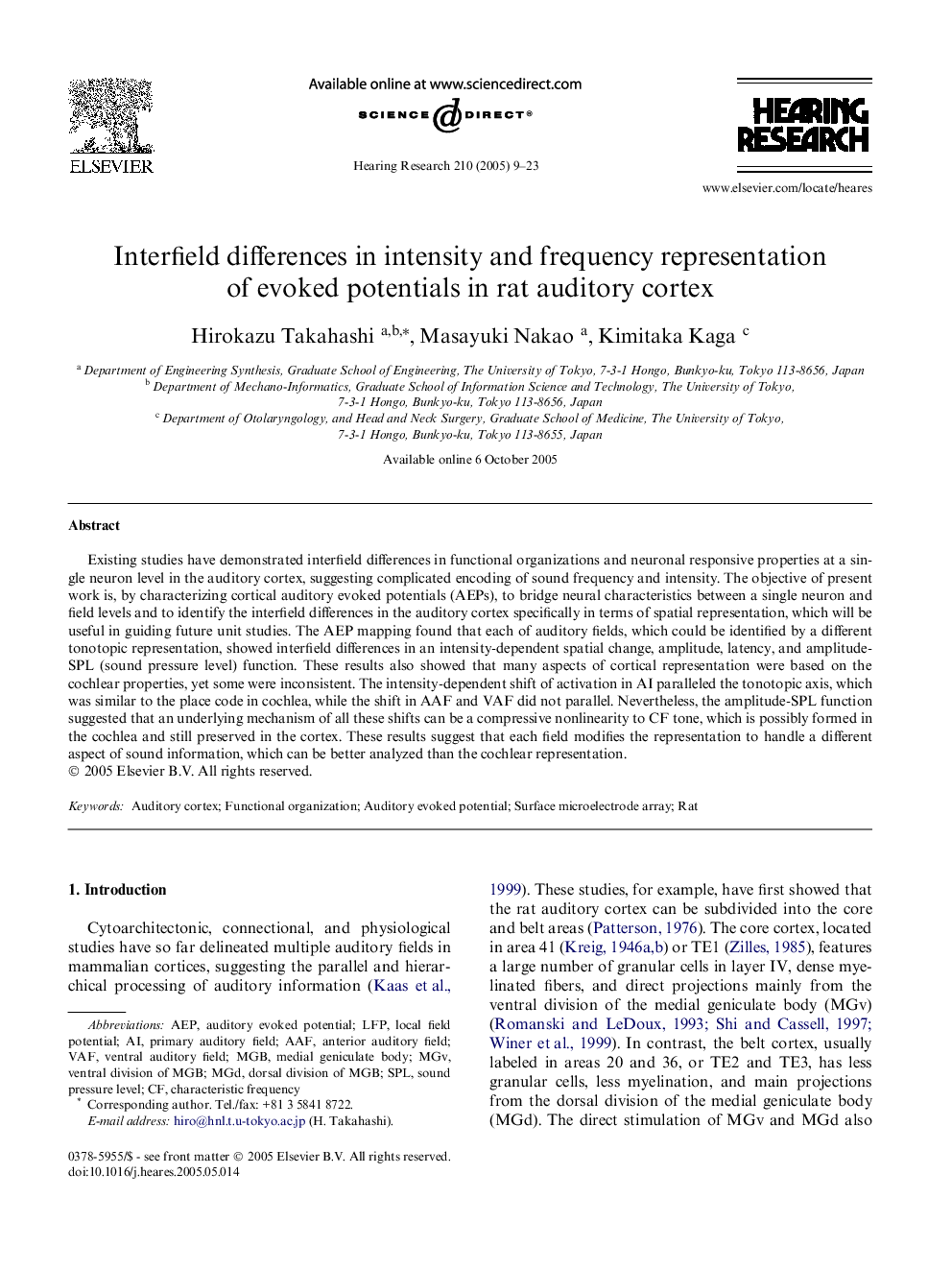| Article ID | Journal | Published Year | Pages | File Type |
|---|---|---|---|---|
| 9436440 | Hearing Research | 2005 | 15 Pages |
Abstract
Existing studies have demonstrated interfield differences in functional organizations and neuronal responsive properties at a single neuron level in the auditory cortex, suggesting complicated encoding of sound frequency and intensity. The objective of present work is, by characterizing cortical auditory evoked potentials (AEPs), to bridge neural characteristics between a single neuron and field levels and to identify the interfield differences in the auditory cortex specifically in terms of spatial representation, which will be useful in guiding future unit studies. The AEP mapping found that each of auditory fields, which could be identified by a different tonotopic representation, showed interfield differences in an intensity-dependent spatial change, amplitude, latency, and amplitude-SPL (sound pressure level) function. These results also showed that many aspects of cortical representation were based on the cochlear properties, yet some were inconsistent. The intensity-dependent shift of activation in AI paralleled the tonotopic axis, which was similar to the place code in cochlea, while the shift in AAF and VAF did not parallel. Nevertheless, the amplitude-SPL function suggested that an underlying mechanism of all these shifts can be a compressive nonlinearity to CF tone, which is possibly formed in the cochlea and still preserved in the cortex. These results suggest that each field modifies the representation to handle a different aspect of sound information, which can be better analyzed than the cochlear representation.
Keywords
Related Topics
Life Sciences
Neuroscience
Sensory Systems
Authors
Hirokazu Takahashi, Masayuki Nakao, Kimitaka Kaga,
